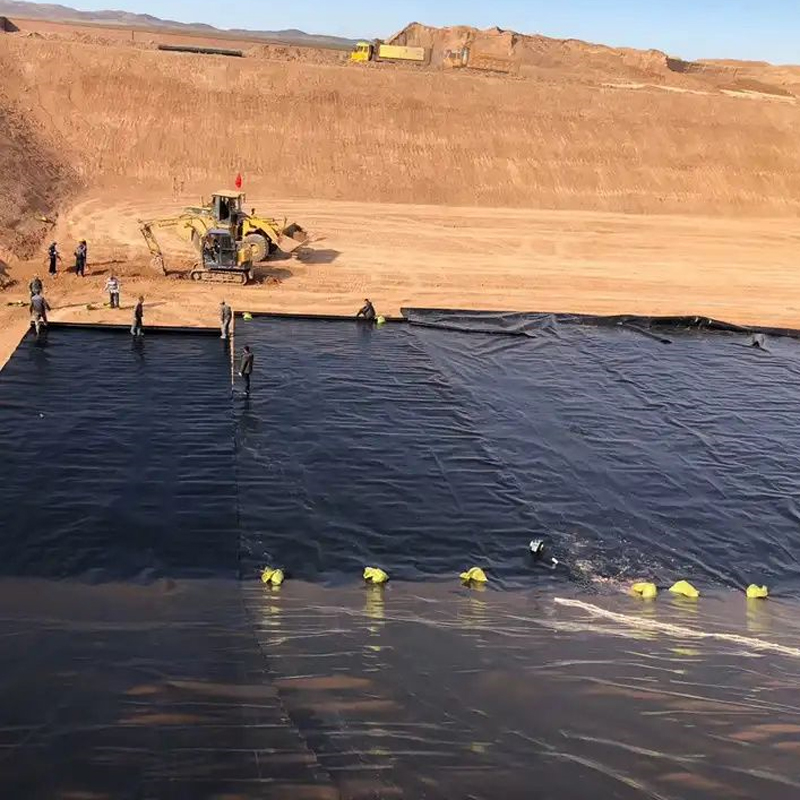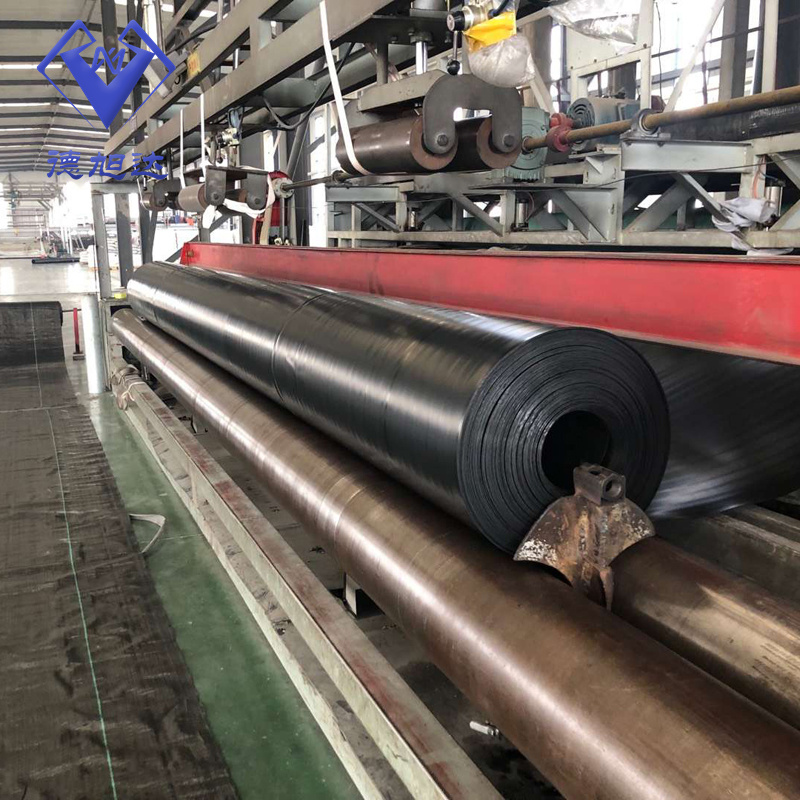
08 May The Role of HDPE Geomembrane in Landfills & How to Choose the Right Geomembrane

The Role of HDPE Geomembrane in Landfills?
High-Density Polyethylene (HDPE) geomembranes play a critical role in landfill projects by serving as an impermeable barrier to contain waste and prevent contaminants from leaching into the surrounding environment. Here’s a breakdown of their key roles:
1.Containment: HDPE geomembranes act as a barrier between the waste materials and the underlying soil and groundwater. They prevent the leachate, which is the liquid formed as water percolates through the waste, from escaping into the surrounding soil and groundwater, thereby protecting the environment from contamination.
2.Environmental Protection: By effectively isolating the waste from the surrounding environment, HDPE geomembranes help prevent pollution of soil, groundwater, and surface water bodies. This is crucial for safeguarding ecosystems and public health.
3.Stability and Durability: HDPE geomembranes are designed to withstand the harsh conditions within landfills, including exposure to various chemicals, gases, and mechanical stresses. Their high tensile strength and puncture resistance ensure long-term stability and durability.
4.Gas Management: Landfills generate various gases, such as methane and carbon dioxide, as organic waste decomposes. HDPE geomembranes, along with gas collection and management systems, help contain these gases within the landfill and facilitate their safe extraction for energy generation or environmental control.
5.Ease of Installation and Maintenance: HDPE geomembranes are lightweight and flexible, making them relatively easy to install over large areas, including irregular terrain. Their smooth surface minimizes friction during installation and reduces the likelihood of damage. Additionally, they require minimal maintenance once installed, contributing to cost-effectiveness over the lifespan of the landfill.
6.Regulatory Compliance: Many environmental regulations require landfills to implement impermeable liners to prevent contamination of soil and groundwater. HDPE geomembranes are widely accepted as a reliable solution for meeting these regulatory requirements.

HDPE Geomembrane
How to choose the right geomembrane for my landfill?
Choosing the right geomembrane for your landfill project involves careful consideration of several factors to ensure optimal performance, durability, and compliance with regulatory requirements. Here are key steps to guide your selection process:
1.Understand Site Conditions: Assess the geological, hydrological, and environmental conditions at the landfill site, including soil types, groundwater levels, climate, and potential risks such as seismic activity or land subsidence. This understanding will help determine the appropriate geomembrane characteristics needed for effective containment.
2.Define Project Objectives: Clearly define the project objectives, including waste types, anticipated lifespan of the landfill, regulatory compliance requirements, and budget constraints. Consider factors such as containment performance, gas management capabilities, and long-term durability.
3.Evaluate Geomembrane Properties: Consider the physical, mechanical, and chemical properties of different geomembrane materials, such as HDPE, PVC, LLDPE, and EPDM. Assess factors like puncture resistance, tensile strength, chemical compatibility, UV resistance, and flexibility to ensure suitability for the specific application and site conditions.
4.Review Manufacturer Specifications: Consult with reputable manufacturers or suppliers of geomembrane products to obtain detailed specifications, performance data, and installation guidelines. Evaluate product certifications, quality control measures, and track record of successful installations.
5.Assess Installation Requirements: Consider the complexity of installation and compatibility with site preparation methods, such as subgrade preparation, anchoring systems, and welding techniques. Ensure that the selected geomembrane can be installed effectively and efficiently by qualified personnel.
6.Evaluate Cost Considerations: Compare the initial cost, installation expenses, and long-term maintenance requirements of different geomembrane options. Balance cost considerations with the expected lifespan and performance of the geomembrane to determine the most cost-effective solution over the project’s lifecycle.
7.Consider Regulatory Compliance: Ensure that the selected geomembrane meets relevant regulatory standards and specifications for landfill liners, such as those set by the Environmental Protection Agency (EPA) or local environmental agencies. Verify compliance with requirements for containment, leachate control, gas management, and environmental protection.
If you are looking for HDPE geomembrane or any geosynthetic material for your landfill project, please feel free to contact us.
Or visit our B2B platform to browse more geosynthetics products.


Audrey4254
Posted at 18:25h, 30 AprilAwesome https://is.gd/N1ikS2